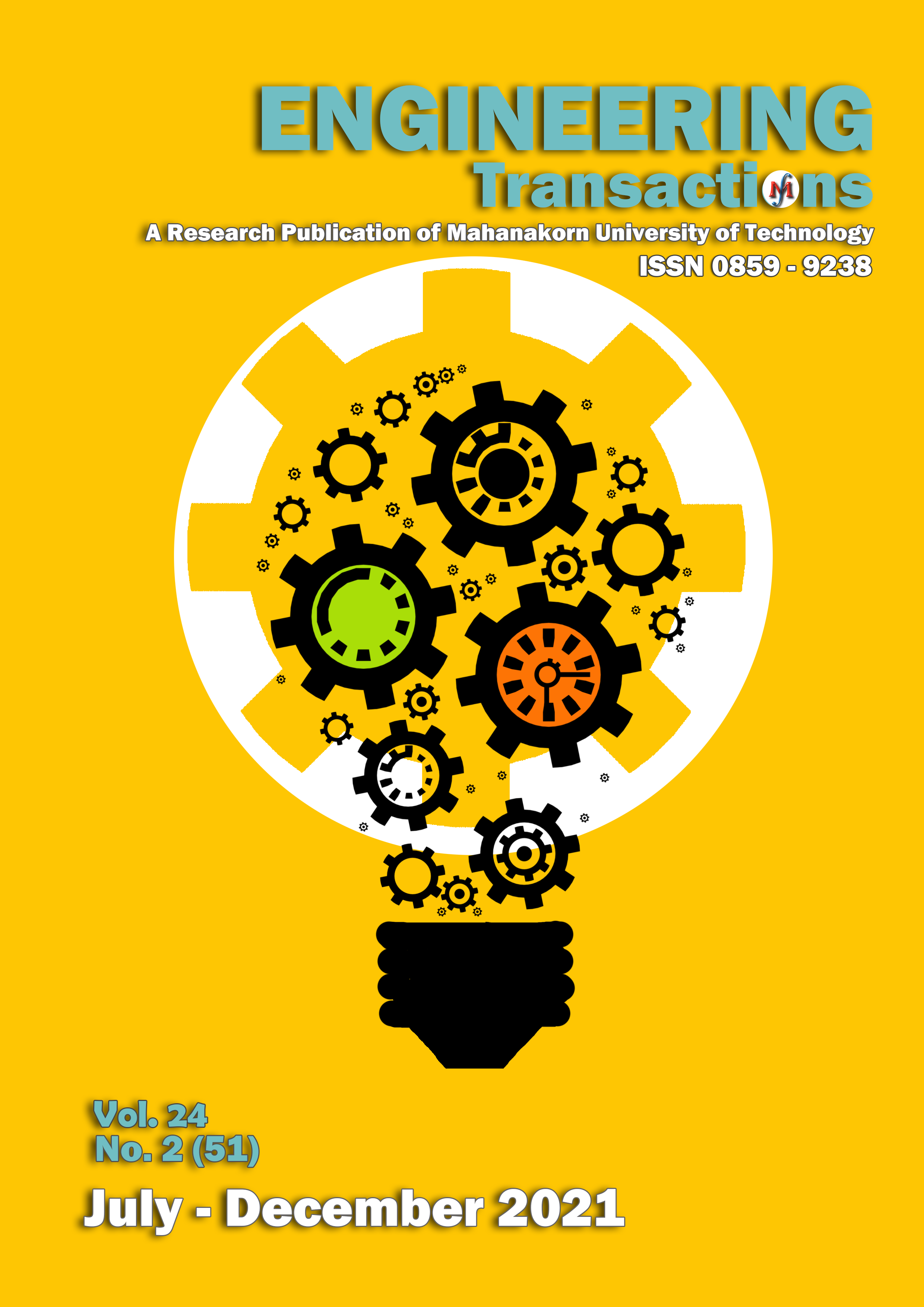A Simplified Lossless Analysis of Magnetoinductive Waveguides for Investigation of Impedance Termination on Power Nulling Characteristics
Main Article Content
Abstract
This work develops a simplified analysis of magnetoinductive (MI) waveguides under lossless and single load conditions. The formulation makes use of the relationship between the incident, reflected, and transmitted MI waves (MIWs) to enable explicit closed-form expressions of the current MIWs along the waveguide. By virtue of the analysis, investigation on
the effect of the impedance termination on the power transfer characteristic of the MI waveguide is carried out, particularly under open, short and quadrature reactive impedance conditions. It is shown that although the quadrature impedance yields no current nulling at the center of each resonator cell, power transfer nulls still persist when the receiver is placed between cells that exhibit out-of-phase currents.
Article Details
Copyright @2021 Engineering Transactions
Faculty of Engineering and Technology
Mahanakorn University of Technology
References
[2] W. X. Zhong, X. Liu, and S. Y. R. Hui, ‘‘A novel single-layer winding array and receiver coil structure for contactless battery charging systems with free-positioning and localized charging
features,’’ IEEE Trans. Ind. Electron., vol. 58, no. 9, pp. 4136–4144, Sep. 2011.
[3] D. McCormick, A. P. Hu, P. Nielsen, S. Malpas, and D. Budgett, “Powering implantable telemetry devices from localized magnetic fields,” in Proc. 29th Annu. Int. Conf. IEEE Eng. Med. Biol. Soc., Aug. 2007, pp. 2331– 2335.
[4] Q. Xu, Z. Gao, H. Wang, J. He, Z. H. Mao, and M. Sun, “Batteries not included: A mat-based wireless power transfer system for implantable medical devices as a moving target,” IEEE Microw. Mag., vol. 14, no. 2, pp. 63–72, Mar. 2013.
[5] S. A. Mirbozorgi, H. Bahrami, M. Sawan, and B. Gosselin, “A smart cage with uniform wireless power distribution in 3D for enabling long-term experiments with freely moving animals,” IEEE Trans. Biomed. Circuits Syst., vol. 10, no. 2, pp. 424–434, Apr. 2016.
[6] C. J. Stevens, “Power transfer via metamaterials,” Comput. Mater. Contin., vol. 33, no. 1, pp. 1–18, 2013.
[7] B. Wang, W. Yerazunis, and K. H. Teo, “Wireless power transfer: Metamaterials and array of coupled resonators,” Proc. IEEE, vol. 101, no. 6, pp. 1359–1368, Jun. 2013.
[8] S. Y. R. Hui, W. Zhong, and C. K. Lee, “A critical review of recent progress in mid-range wireless power transfer,” IEEE Trans. Power Electron., vol. 29, no. 9, pp. 4500–4511, Sep. 2014.
[9] C. C. Mi, G. Buja, S. Y. Choi, and C. T. Rim, ‘‘Modern advances in wireless power transfer systems for roadway powered electric vehicles,’’ IEEE Trans. Ind. Electron., vol. 63, no. 10, pp.
6533–6545, Oct. 2016.
[10] Y. Li, J. Hu, T. Lin, X. Li, F. Chen, Z. He, and R. Mai, ‘‘A new coil structure and its optimization design with constant output voltage and constant
output current for electric vehicle dynamic wireless charging,’’ IEEE Trans. Ind. Informat., vol. 15, no. 9, pp. 5244–5256, Sep. 2019.
[11] K. Mori, H. Lim, S. Iguchi, K. Ishida, M. Takamiya, and T. Sakurai, “Positioning-free resonant wireless power transmission sheet with staggered repeater coil array (SRCA),” IEEE Antennas Wirel. Propag. Lett., vol. 11, pp. 1710–1713, 2012.
[12] S. A. Mirbozorgi, H. Bahrami, M. Sawan, and B. Gosselin, ‘‘A smart multicoil inductively coupled array for wireless power transmission,’’ IEEE Trans. Ind. Electron., vol. 61, no. 11, pp. 6061–6070, Nov. 2014.
[13] E. Waffenschmidt, “Homogeneous magnetic coupling for free positioning in an inductive wireless power system,” IEEE J. Emerg. Sel. Topics Power
Electron., vol. 3, no. 1, pp. 226–233, Mar. 2015.
[14] C. J. Stevens, “Magnetoinductive waves and wireless power transfer,” IEEE Trans Power Electron., vol. 30, no. 11, pp. 6182–6190, Nov. 2015.
[15] G. Puccetti, C. J. Stevens, U. Reggiani, and L. Sandrolini, “Experimental and numerical investigation of termination impedance effects in wireless power transfer via metamaterial,” Energies, vol. 8, no. 3, pp. 1882–1895, 2015.
[16] F. S. Sandoval, S. M. T. Delgado, A. Moazenzadeh, and U. Wallrabe, “Nulls-free wireless power transfer with straightforward control of magnetoinductivewaves,” IEEE Trans. Microw. Theory Techn., vol. 65, no. 4, pp. 1087–1093, Apr. 2017.
[17] F. S. Sandoval, S. M. T. Delgado, A. Moazenzadeh, and U. Wallrabe, “A 2-D magnetoinductive wave device for freer wireless power transfer,” IEEE Trans Power Electron., vol. 34, no. 11, pp. 10433–10444, Nov. 2019.
[18] E. Shamonina, V. A. Kalinin, K. H. Ringhofer, and L. Solymar, “Magnetoinductive waves in one, two, and three dimensions,” J. Appl. Phys.,vol. 92, no. 10, pp. 6252–6261, Nov. 2002.
[19] R. R. A. Syms, E. Shamonina, and L. Solymar, “Magneto-inductive waveguide devices,” IEE Proc.Microw. Antennas Propag., vol. 153, no. 2, pp. 111–121, Apr. 2006.
[20] L. Solymar, Waves in Metamaterials. London, U.K.: Oxford Univ. Press, 2009.


